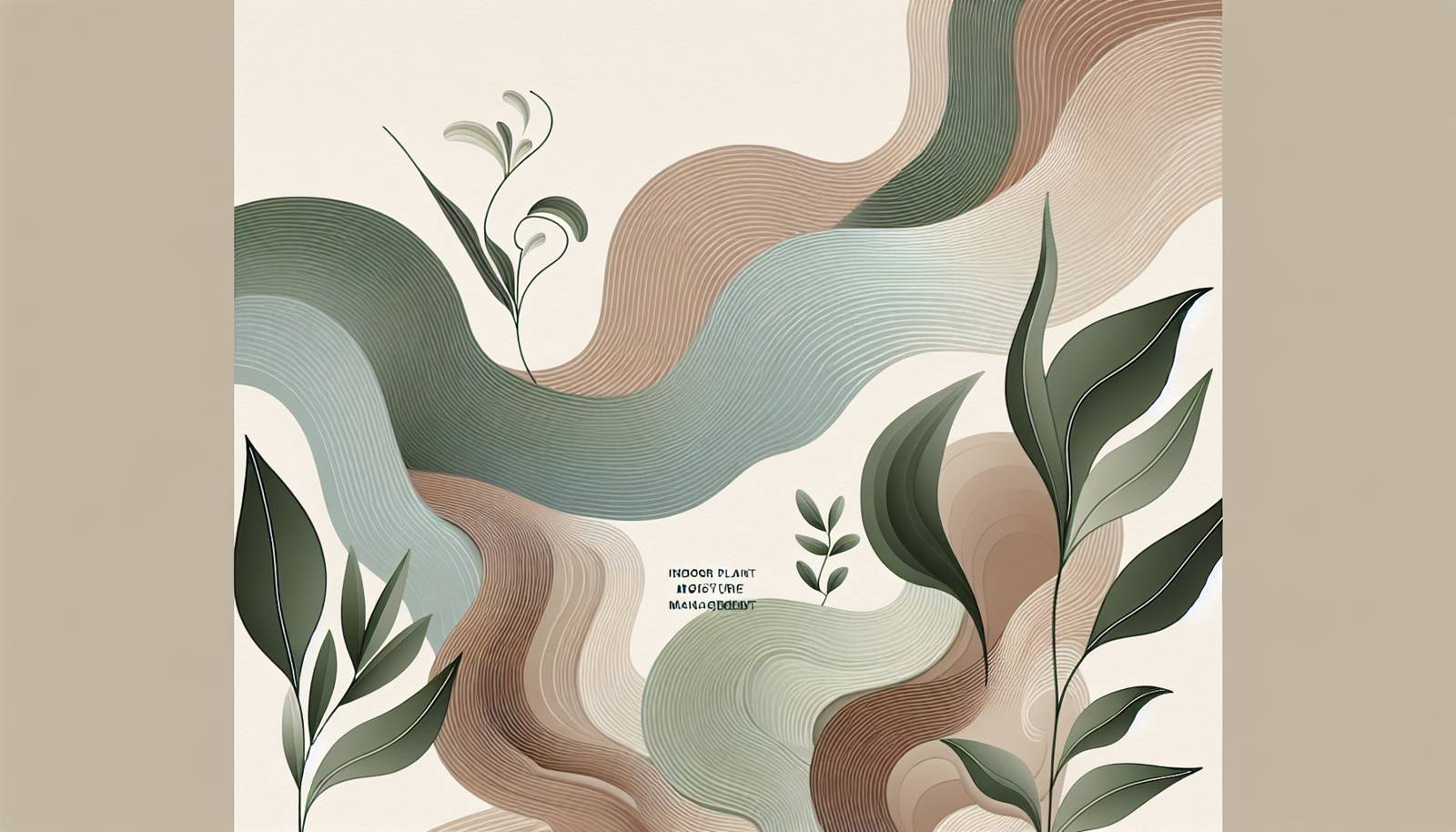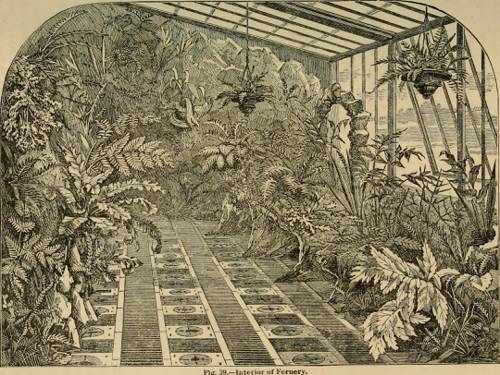
FAQ About Indoor Plant Moisture Management Techniques

What is the importance of moisture management for indoor plants?
Proper moisture management is crucial for indoor plants as it helps maintain the health and vitality of the plants. It ensures that plants receive the right amount of water, preventing issues such as root rot from overwatering or wilting from underwatering. By managing moisture levels effectively, you can support robust growth and avoid stress conditions that might make plants susceptible to pests and diseases.

How can I check the moisture level in my indoor plant's soil?
To check the moisture level in your indoor plant's soil, you can use a few simple methods. The most common is the finger test: insert your finger into the soil up to your first knuckle; if the soil feels dry, it's time to water. Alternatively, you can use a moisture meter, which provides a digital reading of the soil's moisture content. These tools are readily available at garden centers and can offer a more precise measurement.

What are the signs of overwatering in indoor plants?
Signs of overwatering in indoor plants include yellowing leaves, wilting despite wet soil, root rot, a musty smell from the potting mix, and the presence of mold or fungus on the soil surface. Correcting this issue often involves reducing watering frequency, allowing the soil to dry out between waterings, and ensuring the pot has adequate drainage.

How do I prevent root rot in my indoor plants?
To prevent root rot in indoor plants, ensure your pots have sufficient drainage holes to prevent water from accumulating. Use well-draining potting soil and avoid letting the plants sit in excess water. It's crucial to water only when the topsoil feels dry. If using a saucer beneath your pots, empty any standing water regularly.

What is the best watering schedule for indoor plants?
The best watering schedule for indoor plants varies based on factors such as plant type, pot size, and environmental conditions. However, a general guideline is to water when the top inch of the soil feels dry. It's often better to underwater slightly rather than overwater and adjust as needed based on how the plant responds. Season changes may also require adjustments to watering frequency.

How does humidity affect indoor plant moisture management?
Humidity plays a significant role in indoor plant moisture management by influencing how quickly water evaporates from the soil and the plant itself. High humidity can slow evaporation rates, potentially leading to overwatering issues if watering frequency isn't adjusted. Conversely, low humidity can increase evaporation, requiring more frequent watering. Monitoring and adjusting humidity levels can help maintain optimal moisture balance.

Are there specific indoor plants that require special moisture management techniques?
Yes, some indoor plants require specialized moisture management. For example, succulents and cacti need infrequent watering due to their ability to store water, while tropical plants like ferns and peace lilies prefer consistently moist soil. Orchids typically require specific watering techniques, such as soaking, rather than just pouring water over the potting medium. Understanding each plant's needs helps tailor appropriate moisture management strategies.

Can self-watering pots help with moisture management?
Self-watering pots can indeed help with moisture management for indoor plants by providing a consistent water supply. They typically feature a reservoir that supplies water to the plant's roots via a wick or capillary action. This method is useful for maintaining optimal moisture levels, especially for busy individuals or for plants that prefer soil to stay consistently moist.

How do I know if my indoor plants are underwatered?
Indicators of underwatering in indoor plants include dry, brittle leaves, browning leaf edges, soil pulling away from the sides of the pot, and wilting. Addressing underwatering involves watering the plants thoroughly, ensuring water reaches the root zone and adjusting the watering routine to prevent recurrence.

What role does potting soil play in moisture management?
Potting soil is critical for moisture management as it dictates how well water is retained or drained. Soils containing components like peat moss or coconut coir retain moisture well, while those with sand or perlite offer good drainage. Choosing the right potting mix for your plant's needs is essential to prevent water-related issues such as rot or dehydration.

How does the size of the pot affect indoor plant moisture levels?
The size of the pot can significantly affect moisture levels. A pot that is too large for a plant can retain too much moisture, increasing the risk of overwatering, while a too-small pot may dry out too quickly, necessitating more frequent watering. Selecting the appropriate pot size helps achieve a balance in moisture absorption and evaporation.

What is the role of drainage holes in pots for moisture management?
Drainage holes are vital in pots for preventing water from pooling at the bottom, which can lead to root rot and other moisture-related issues. They allow excess water to escape, ensuring that the soil remains appropriately moist without becoming waterlogged. When potting new plants, selecting containers with adequate drainage is a key step in moisture management.

Can mulching be used for indoor plant moisture retention?
Yes, mulching can be used for indoor plant moisture retention. Applying a layer of organic material such as bark chips, coconut coir, or pebbles over the soil surface can help reduce evaporation and maintain consistent moisture levels. Mulching also helps regulate soil temperature and can discourage pests.

How can I manage moisture for plants in low-light indoor conditions?
In low-light conditions, plants typically require less water as evaporation and transpiration rates are reduced. It's important to adjust your watering schedule to prevent overwatering by ensuring that the soil has dried out to the appropriate depth before each watering. Additionally, consider using pots with good drainage and high-quality, well-draining potting mix to aid in moisture regulation.

Why is it important to avoid watering plants during the hottest part of the day?
Watering plants during the hottest part of the day is generally avoided because the water can evaporate too quickly in the heat, preventing it from reaching the roots effectively. Early morning or late afternoon is usually preferred, as this allows water to be absorbed more efficiently and reduces the risk of leaf scorch due to sunlight magnification through water droplets.

What is the effect of air conditioning on indoor plant moisture needs?
Air conditioning can significantly affect indoor plant moisture needs by reducing humidity levels and increasing evaporation rates. This often means that plants require more frequent watering compared to unconditioned spaces. Monitoring both soil moisture and humidity levels can help in adjusting irrigation practices to accommodate the drying effects of air conditioning.

How can hydrogel crystals be used in indoor plant moisture management?
Hydrogel crystals can be used to enhance moisture management in indoor plants by absorbing and slowly releasing water as the soil dries out. These crystals are mixed into the potting soil, offering a reservoir of moisture that can help maintain a consistent watering level and reduce watering frequency. They're especially useful for plants that prefer evenly moist soil.

Is it possible to overwater houseplants even with proper drainage?
Yes, it's possible to overwater houseplants even if the pots have proper drainage. If water is applied too frequently or in excess, the soil can remain continually saturated, suffocating the roots and leading to root rot. It's essential to balance watering practices with plant and environmental needs, allowing the soil to dry out adequately between watering sessions.

Can misting leaves be beneficial for moisture management in indoor plants?
Misting leaves can be beneficial for creating a temporary increase in humidity around the plant, which can help with moisture management, especially for tropical species. However, it doesn't substitute for proper soil watering techniques. Regular misting can aid in preventing dry air issues but should be complemented with an appropriate watering routine and other humidity-enhancing strategies like using a humidifier or grouping plants together.

What are the benefits of using a humidity tray for indoor plants?
A humidity tray, filled with water and placed beneath a plant's pot, can benefit indoor plants by increasing the local humidity level. As the water evaporates, it raises the humidity around the plant, which is particularly advantageous for humidity-loving species. This method is simple and can prevent the need for frequent misting, supporting leaf and overall plant health.
